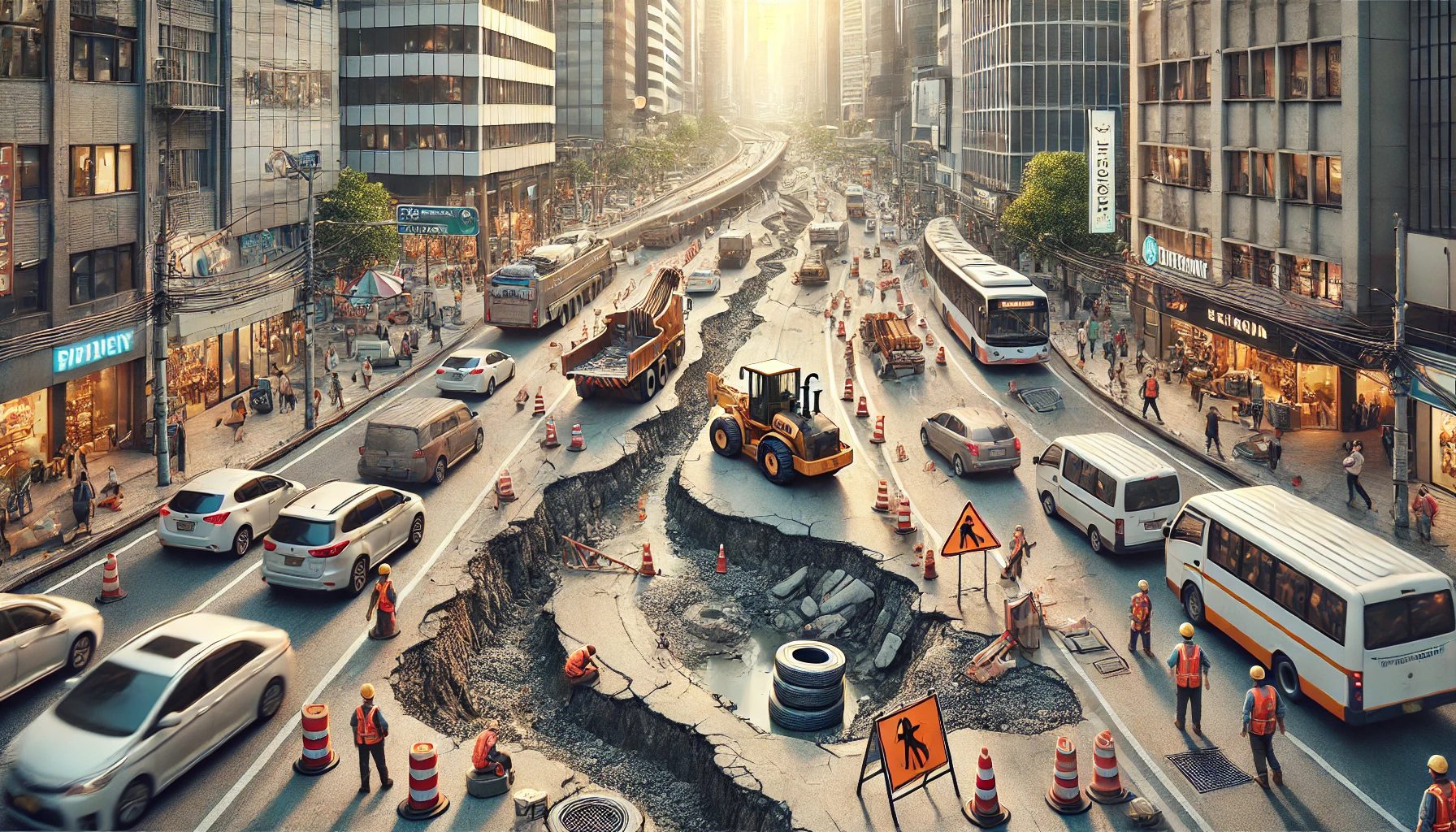Urban areas, with their dense populations and bustling activities, pose unique challenges for road maintenance. As cities grow and traffic volumes increase, the wear and tear on road surfaces intensifies, necessitating a robust and proactive maintenance strategy. Let’s explore the various challenges and potential solutions in maintaining urban road infrastructure.
Understanding the Scope of Urban Road Maintenance
Urban road maintenance is a multifaceted task that involves more than just fixing potholes. It encompasses a range of activities, including resurfacing, repairing cracks, maintaining drainage systems, and ensuring road safety features are up to standard. The goal is to provide a smooth, safe, and durable road surface that can withstand the high demands of urban traffic.
The Primary Challenges
Maintaining urban roads is a complex endeavor due to several factors:
1. Heavy Traffic: Urban roads endure a higher volume of vehicles compared to rural areas. This constant traffic load accelerates the deterioration of road surfaces, leading to issues like cracks, potholes, and surface wear.
2. Limited Maintenance Windows: Cities operate around the clock, leaving limited windows for maintenance work. Road closures for repairs can cause significant disruptions, making it crucial to balance maintenance needs with minimizing inconvenience to the public.
3. Diverse User Needs: Urban roads cater to a variety of users, including pedestrians, cyclists, public transportation, and private vehicles. Maintenance plans must account for the safety and accessibility of all these users.
4. Aging Infrastructure: Many urban areas have road networks that are decades old. Aging infrastructure requires more frequent and intensive maintenance efforts to keep it functional and safe.
5. Environmental Impact: Urban areas often have stricter environmental regulations. Maintenance activities must be planned and executed in a way that minimizes pollution and adheres to these regulations.
Innovative Solutions for Urban Road Maintenance
To tackle these challenges, cities are adopting innovative solutions and technologies:
1. Predictive Maintenance
Leveraging data and analytics, cities can predict when and where road maintenance will be needed. By using sensors and monitoring systems, they can gather real-time data on road conditions and traffic patterns. This proactive approach allows for timely interventions before minor issues become major problems.
2. Sustainable Materials
Using sustainable materials in road construction and maintenance can significantly reduce environmental impact. Materials like recycled asphalt, permeable pavements, and environmentally friendly sealants are becoming more common, offering durability while being eco-friendly.
3. Advanced Repair Techniques
Innovative repair techniques, such as infrared asphalt repair and cold in-place recycling, are making road maintenance faster and more efficient. These methods minimize the need for extensive road closures and reduce the environmental footprint of maintenance activities.
4. Public-Private Partnerships (PPPs)
Collaborations between government agencies and private companies can enhance the efficiency and effectiveness of road maintenance. PPPs can provide the necessary funding, expertise, and resources for large-scale maintenance projects, ensuring that urban roads remain in good condition.
Enhancing Urban Road Longevity with Smart Maintenance Practices
In today’s rapidly evolving urban landscapes, intelligent maintenance practices are pivotal in ensuring the longevity of road infrastructure. Implementing predictive maintenance systems can help city planners identify potential road failures before they occur, thus avoiding costly repairs and minimizing disruption to traffic. Utilizing sustainable materials not only contributes to environmental conservation but also enhances the durability of road surfaces, making them more resistant to wear and tear. By integrating advanced technologies and fostering public-private partnerships, urban areas can maintain robust road networks that meet the demands of modern transportation.
The Role of Technology in Road Maintenance
Smart Sensors and IoT
The integration of intelligent sensors and the Internet of Things (IoT) into road maintenance practices is revolutionizing how cities monitor and manage their road networks. These technologies provide real-time data on road conditions, enabling immediate response to emerging issues. For instance, sensors can detect surface temperature, moisture levels, and traffic loads, which can be used to predict and prevent road damage.
Drones and Robotics
Drones and robotic technologies are also playing a significant role in urban road maintenance. Drones can conduct aerial inspections of road surfaces, bridges, and tunnels, capturing high-resolution images and identifying potential issues. Robotics, on the other hand, can be used for precise repairs, such as filling cracks and potholes, reducing the need for large crews, and minimizing traffic disruptions.
Challenges of Implementing New Technologies
While the adoption of new technologies offers numerous benefits, it also comes with its own set of challenges:
1. High Initial Costs: The installation and maintenance of intelligent sensors, IoT systems, and drones require significant investment. While these costs can be offset by long-term savings, the initial financial outlay can be a barrier for some cities.
2. Technical Expertise: The effective use of advanced technologies requires specialized knowledge and skills. Cities need to invest in training and possibly hiring new staff who are proficient in managing these systems.
3. Data Management: The influx of data from various sources needs to be effectively managed and analyzed. This requires robust data infrastructure and analytical tools, which can be complex and resource-intensive to implement.
Examples and Case Studies
New York City’s Comprehensive Approach
New York City has implemented a comprehensive road maintenance strategy that combines predictive maintenance, sustainable materials, and public-private partnerships. The city’s Department of Transportation uses a sophisticated monitoring system to track road conditions and schedule timely repairs. By collaborating with private contractors, the city has been able to enhance the efficiency and quality of its road maintenance projects.
Singapore’s Smart Road Management
Singapore is a leading example of leveraging technology for road maintenance. The city-state uses an extensive network of sensors and cameras to monitor road conditions. Data from these sensors is analyzed in real-time to predict and address potential issues. Singapore also employs drones for aerial inspections and robots for precision repairs, ensuring minimal disruption to its road network.
Conclusion: A Clear Path Forward
Maintaining urban roads is undoubtedly a challenging task, but with the right strategies and technologies, cities can ensure their road networks remain safe and functional. By embracing predictive maintenance, sustainable materials, and innovative repair techniques, urban areas can effectively manage their road infrastructure. Additionally, fostering public-private partnerships can provide the necessary resources and expertise to tackle these challenges head-on.
In conclusion, the key to overcoming road maintenance challenges in urban areas lies in a proactive, technology-driven approach. By staying ahead of potential issues and leveraging modern solutions, cities can maintain their roads in top condition, ensuring smooth and safe travel for all users. Through continuous innovation and collaboration, the future of urban road maintenance looks promising.


